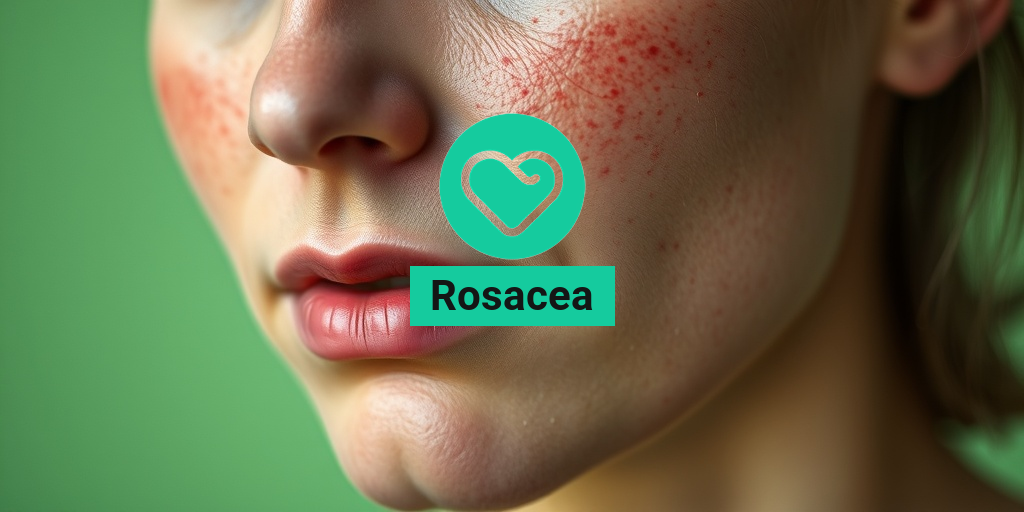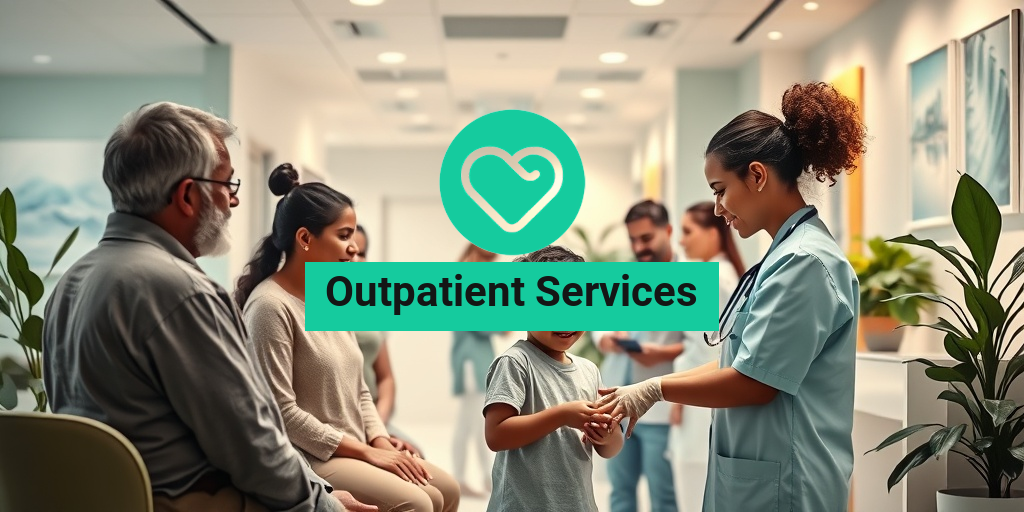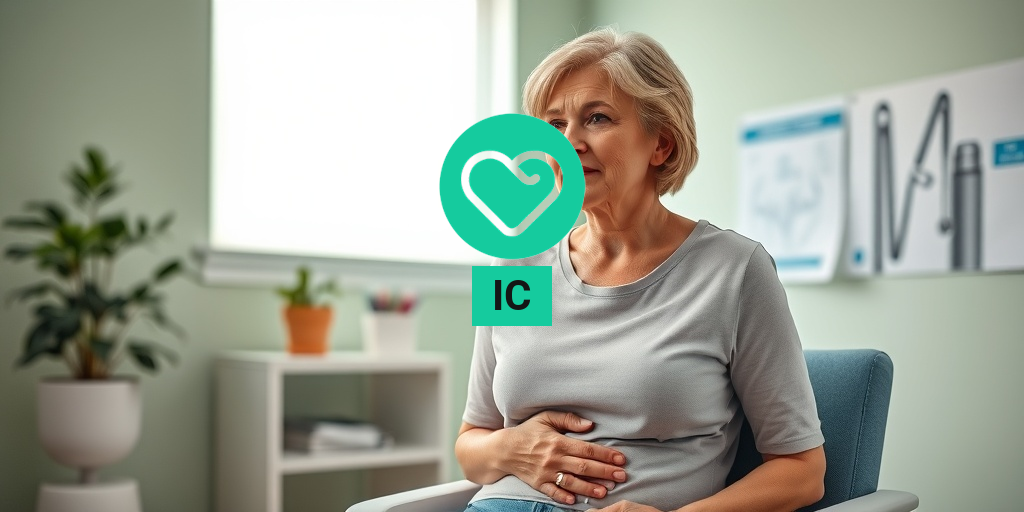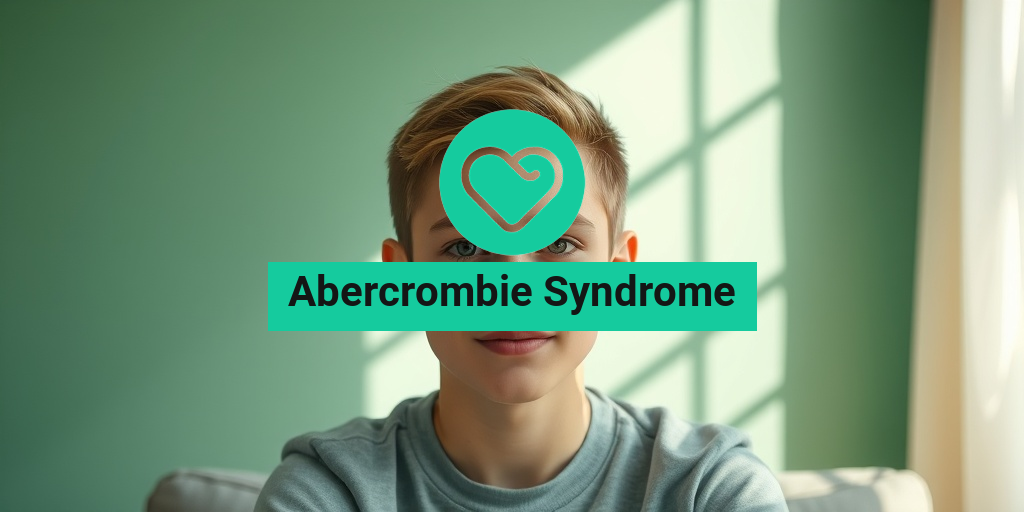What Is Rosacea?
Rosacea is a common yet often misunderstood skin condition that primarily affects the face. It typically manifests as redness, visible blood vessels, and sometimes acne-like bumps. While it can occur in anyone, it is most frequently seen in fair-skinned individuals and tends to affect adults between the ages of 30 and 50. The exact cause of rosacea remains unclear, but it is believed to involve a combination of genetic and environmental factors.
Rosacea is not just a cosmetic concern; it can significantly impact a person’s quality of life. Many individuals with rosacea experience emotional distress due to the visible symptoms, which can lead to social anxiety and decreased self-esteem. Understanding this condition is crucial for effective management and treatment.
Types of Rosacea
Rosacea is categorized into four subtypes, each with distinct characteristics:
- Subtype 1: Erythematotelangiectatic Rosacea – Characterized by persistent redness and visible blood vessels.
- Subtype 2: Papulopustular Rosacea – Involves redness along with acne-like breakouts.
- Subtype 3: Phymatous Rosacea – Leads to thickening of the skin, often affecting the nose.
- Subtype 4: Ocular Rosacea – Affects the eyes, causing irritation and redness.
Rosacea Symptoms
Recognizing the symptoms of rosacea is essential for early diagnosis and treatment. The symptoms can vary widely among individuals, but some common signs include:
Facial Redness
One of the hallmark symptoms of rosacea is a persistent redness on the central part of the face, including the cheeks, nose, and forehead. This redness can resemble a sunburn and may flare up in response to various triggers.
Visible Blood Vessels
Many individuals with rosacea develop telangiectasia, which are small, visible blood vessels that appear on the surface of the skin. These can be particularly noticeable on the cheeks and nose.
Acne-like Bumps
Rosacea can also cause small, red, pus-filled bumps that resemble acne. These bumps can be painful and may lead to further skin irritation.
Thickened Skin
In more severe cases, particularly with phymatous rosacea, the skin may thicken and develop a bumpy texture. This is most commonly seen on the nose, leading to a condition known as rhinophyma.
Eye Irritation
Ocular rosacea can cause symptoms such as dryness, irritation, and redness in the eyes. This can lead to discomfort and, in some cases, vision problems if left untreated.
Triggers of Rosacea Symptoms
Understanding what triggers your rosacea symptoms is crucial for managing the condition. Common triggers include:
- Hot beverages and spicy foods 🌶️
- Alcohol consumption 🍷
- Extreme temperatures (hot or cold)
- Sun exposure ☀️
- Stress and emotional factors 😟
- Certain skincare products or cosmetics
If you suspect you have rosacea or are experiencing any of these symptoms, it’s essential to consult a healthcare professional for an accurate diagnosis and appropriate treatment options. Resources like Yesil Health AI (yesilhealth.com) can provide evidence-based answers to your health questions and guide you in managing your condition effectively.
In conclusion, while rosacea can be a challenging condition to live with, understanding its symptoms and triggers can empower you to take control of your skin health. With the right treatment and lifestyle adjustments, many individuals find relief and can manage their symptoms effectively. 🌼
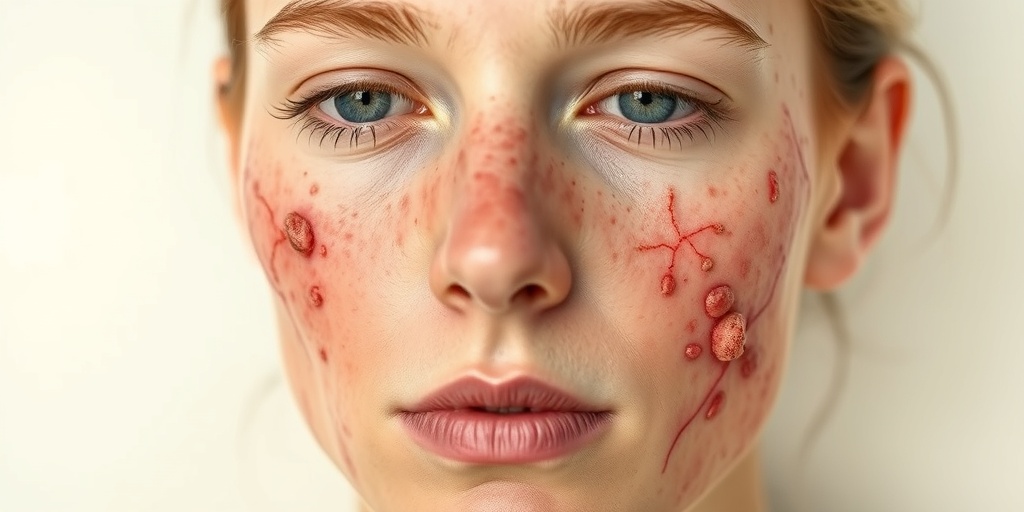
Types of Rosacea
Rosacea is a common skin condition that primarily affects the face, leading to redness, visible blood vessels, and sometimes acne-like bumps. Understanding the different types of rosacea can help in identifying the condition and seeking appropriate rosacea treatment. Here are the main types:
1. Erythematotelangiectatic Rosacea
This type is characterized by persistent redness and visible blood vessels. Individuals may experience flushing and a burning sensation. It often affects the central part of the face, including the cheeks and nose. Managing this type may involve lifestyle changes and topical treatments.
2. Papulopustular Rosacea
Often mistaken for acne, papulopustular rosacea presents with red bumps and pus-filled lesions. This type can be particularly frustrating for those who experience it, as it can lead to self-esteem issues. Effective treatment options include topical creams and oral medications.
3. Phymatous Rosacea
This type is less common and is characterized by thickening of the skin, particularly on the nose, leading to a bulbous appearance. It can also affect other areas of the face. Rosacea cream and surgical options may be necessary for severe cases.
4. Ocular Rosacea
Ocular rosacea affects the eyes, causing redness, irritation, and dryness. It can lead to more serious eye problems if left untreated. Individuals experiencing symptoms should consult an eye specialist for appropriate rosacea treatment.
Rosacea Triggers
Identifying and avoiding triggers is crucial for managing rosacea effectively. Different individuals may have different triggers, but some common ones include:
1. Environmental Factors
- Sun Exposure: UV rays can exacerbate rosacea symptoms, making sun protection essential.
- Temperature Changes: Extreme heat or cold can trigger flare-ups. Staying in a controlled environment can help.
2. Food and Drink
- Spicy Foods: Many people with rosacea find that spicy foods can lead to increased redness.
- Alcohol: Particularly red wine, is a common trigger for many individuals.
3. Stress
Emotional stress can lead to flare-ups in many individuals. Practicing relaxation techniques such as yoga or meditation can be beneficial in managing stress levels.
4. Skincare Products
Some skincare products can irritate the skin and worsen rosacea symptoms. It’s important to choose gentle, fragrance-free products. Always perform a patch test before trying new products.
5. Physical Exertion
Intense exercise can lead to flushing and increased redness. Opting for moderate exercise and staying hydrated can help mitigate this effect.
By understanding the types of rosacea and recognizing potential triggers, individuals can take proactive steps towards managing their condition effectively. 🌼

Rosacea Diagnosis
Diagnosing rosacea can be a nuanced process, as it often mimics other skin conditions. If you suspect you have rosacea, it’s essential to consult a healthcare professional or a dermatologist who specializes in skin disorders. Here’s what you need to know about the diagnosis process.
Identifying Symptoms
Rosacea typically presents with a variety of symptoms that can vary from person to person. Common signs include:
- Facial redness: Persistent redness in the central part of the face, often resembling a sunburn.
- Visible blood vessels: Small, dilated blood vessels may become noticeable on the skin.
- Acne-like breakouts: Bumps and pimples that resemble acne but are not the same.
- Thickened skin: In some cases, the skin may become thickened, particularly around the nose.
- Eye irritation: Some individuals experience eye symptoms, such as dryness, irritation, or redness.
Consultation and Examination
During your consultation, the dermatologist will conduct a thorough examination of your skin and may ask about your medical history and any triggers you’ve noticed. It’s helpful to keep a diary of your symptoms, noting when they occur and any potential triggers, such as:
In some cases, the doctor may perform additional tests to rule out other skin conditions, such as acne or eczema. This comprehensive approach ensures an accurate diagnosis and helps tailor the most effective treatment plan for you.
Rosacea Treatment Options
Once diagnosed, managing rosacea involves a combination of lifestyle changes and medical treatments. While there is no cure for rosacea, various options can help control symptoms and improve your skin’s appearance.
Topical Treatments
Topical medications are often the first line of defense against rosacea. These creams and gels can help reduce inflammation and redness. Common options include:
- Metronidazole: An antibiotic that helps reduce inflammation and redness.
- Azelaic acid: A naturally occurring acid that can help clear up bumps and redness.
- Ivermectin: A topical treatment that targets inflammatory lesions.
Oral Medications
For more severe cases, dermatologists may prescribe oral medications. These can include:
- Antibiotics: Such as doxycycline or tetracycline, which can help reduce inflammation and treat acne-like breakouts.
- Isotretinoin: In rare cases, this powerful medication may be prescribed for severe rosacea that doesn’t respond to other treatments.
Laser and Light Therapy
For those struggling with persistent redness or visible blood vessels, laser therapy or light treatments can be effective. These procedures work by targeting and reducing the appearance of blood vessels and redness. Some popular options include:
- Pulsed dye laser: This treatment can effectively reduce redness and improve skin texture.
- Intense pulsed light (IPL): A non-invasive option that can help diminish redness and improve overall skin tone.
Lifestyle Changes
In addition to medical treatments, making certain lifestyle changes can significantly impact your rosacea management. Consider the following:
- Avoiding triggers: Identify and avoid foods, beverages, or activities that exacerbate your symptoms.
- Sun protection: Use a broad-spectrum sunscreen daily to protect your skin from UV rays ☀️.
- Gentle skincare: Opt for mild, fragrance-free products to avoid irritating your skin.
By combining medical treatments with lifestyle adjustments, you can effectively manage your rosacea and improve your quality of life. Remember, it’s essential to work closely with your healthcare provider to find the best treatment plan tailored to your needs.
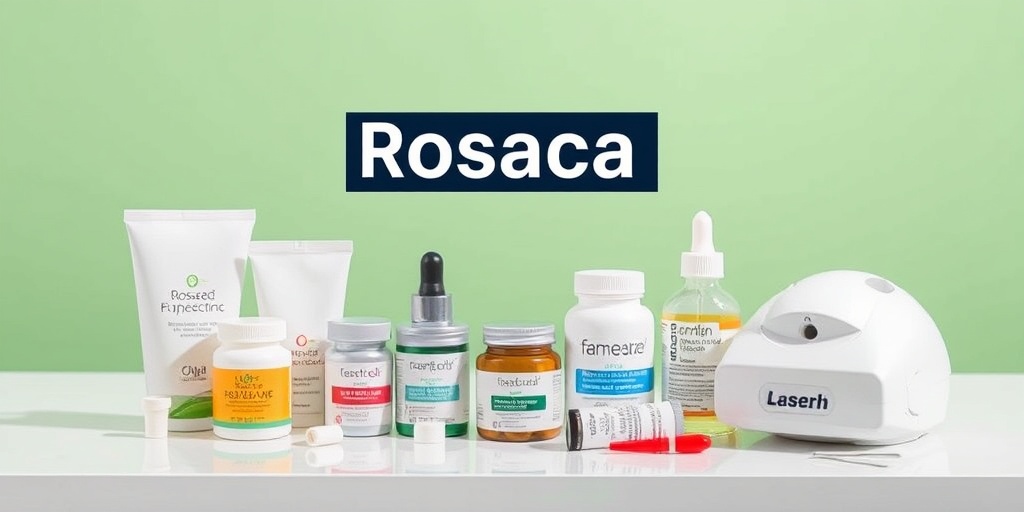
Home Remedies for Rosacea
Rosacea is a common skin condition that causes redness, visible blood vessels, and sometimes acne-like bumps on the face. While there is no cure for rosacea, many individuals find relief through various home remedies. Here are some effective strategies to help manage the symptoms of rosacea.
1. Gentle Cleansing
Using a gentle cleanser is crucial for those with rosacea. Harsh soaps can irritate the skin and exacerbate redness. Opt for a mild, fragrance-free cleanser that won’t strip your skin of its natural oils. Look for products labeled as non-comedogenic to avoid clogging pores.
2. Moisturizing
Keeping your skin hydrated is essential. A good moisturizer can help soothe irritation and reduce redness. Choose a moisturizer that contains ceramides or hyaluronic acid, as these ingredients help to lock in moisture and strengthen the skin barrier.
3. Green Tea
Green tea is known for its anti-inflammatory properties. Applying cooled green tea bags to the affected areas can help reduce redness and soothe the skin. Simply steep a green tea bag in hot water, let it cool, and place it on your face for about 10-15 minutes. 🍵
4. Aloe Vera
Aloe vera is another natural remedy that can provide relief for rosacea sufferers. Its soothing properties can help calm irritated skin. Apply pure aloe vera gel directly to the affected areas to help reduce inflammation and redness.
5. Oatmeal Masks
Oatmeal is known for its skin-soothing properties. You can create a simple oatmeal mask by mixing ground oats with water to form a paste. Apply this paste to your face, leave it on for about 15-20 minutes, and then rinse off with lukewarm water. This can help reduce irritation and redness.
6. Avoiding Triggers
Identifying and avoiding triggers is key to managing rosacea. Common triggers include:
Keeping a diary to track your flare-ups can help you pinpoint what exacerbates your symptoms.
Living with Rosacea
Living with rosacea can be challenging, but understanding the condition and implementing effective management strategies can significantly improve your quality of life. Here are some tips for navigating daily life with rosacea.
1. Skincare Routine
Establishing a consistent skincare routine is vital for managing rosacea. Stick to products that are specifically formulated for sensitive skin. Avoid products with alcohol, fragrances, or harsh exfoliants, as these can irritate your skin further.
2. Sun Protection
Sun exposure can trigger rosacea flare-ups, making sun protection essential. Use a broad-spectrum sunscreen with an SPF of at least 30 every day, even on cloudy days. Wearing a wide-brimmed hat and seeking shade can also help protect your skin from harmful UV rays. ☀️
3. Makeup Tips
If you choose to wear makeup, opt for mineral-based products that are less likely to irritate your skin. Green-tinted primers can help neutralize redness, while lightweight foundations can provide coverage without feeling heavy. Always remove makeup gently at the end of the day.
4. Stress Management
Stress is a known trigger for rosacea flare-ups. Incorporating stress-reducing activities into your daily routine can be beneficial. Consider practices such as yoga, meditation, or deep-breathing exercises to help manage stress levels.
5. Support and Community
Connecting with others who have rosacea can provide emotional support and practical advice. Online forums and local support groups can be great resources for sharing experiences and coping strategies.
By implementing these home remedies and lifestyle adjustments, you can take control of your rosacea and improve your skin’s appearance and overall well-being. Remember, it’s essential to consult with a healthcare professional for personalized advice and treatment options tailored to your specific needs.
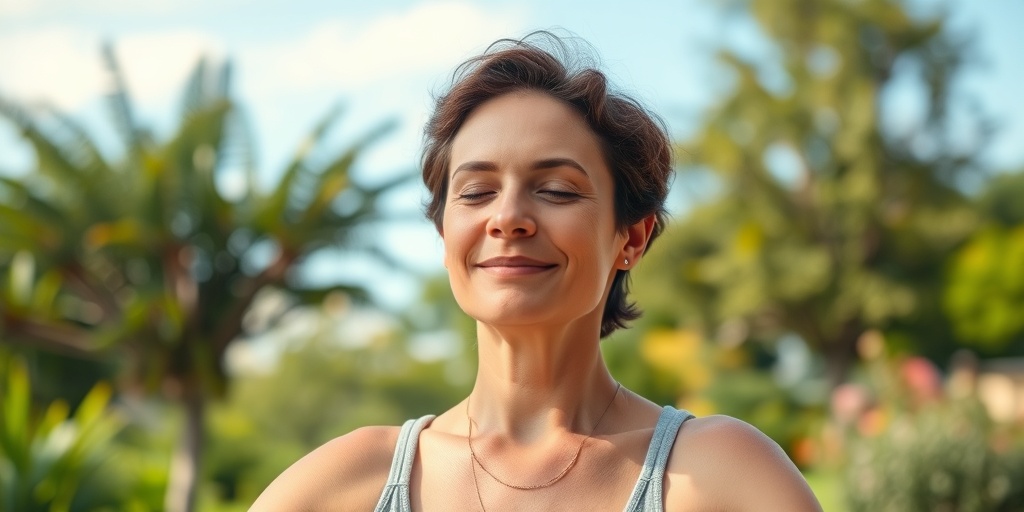
Frequently Asked Questions about Rosacea
What is Rosacea?
Rosacea is a chronic skin condition that primarily affects the face, causing redness, visible blood vessels, and sometimes acne-like bumps. It can vary in severity and may also lead to eye irritation.
What are the common symptoms of Rosacea?
- Persistent facial redness
- Visible blood vessels
- Acne-like breakouts
- Thickened skin, particularly on the nose
- Eye irritation or dryness
What causes Rosacea?
The exact cause of rosacea is not fully understood, but it may involve a combination of genetic, environmental, and lifestyle factors. Triggers can include sun exposure, hot or cold weather, spicy foods, and stress.
How is Rosacea treated?
Treatment for rosacea often includes topical medications, oral antibiotics, and lifestyle changes. It’s essential to consult a dermatologist for a personalized treatment plan.
Are there specific creams for Rosacea?
Yes, there are specialized rosacea creams designed to reduce redness and inflammation. Look for products containing ingredients like metronidazole or azelaic acid.
Can diet affect Rosacea?
Yes, certain foods and beverages can trigger rosacea flare-ups. Common culprits include alcohol, spicy foods, and hot beverages. Keeping a food diary may help identify personal triggers.
Is Rosacea the same as acne?
No, while rosacea can resemble acne, it is a distinct condition. Unlike acne, rosacea does not typically involve blackheads or whiteheads and is more characterized by redness and visible blood vessels.
Can Rosacea be cured?
Currently, there is no cure for rosacea, but it can be effectively managed with appropriate treatment and lifestyle adjustments.
How can I manage Rosacea at home?
- Use gentle skincare products
- Avoid known triggers
- Apply sunscreen daily
- Keep your skin moisturized
When should I see a doctor for Rosacea?
If you experience persistent redness, irritation, or if your symptoms worsen, it is advisable to consult a healthcare professional for a proper diagnosis and treatment plan.

